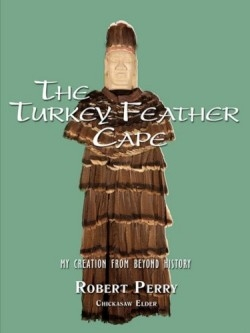The Turkey Feather Cape
Here is a how-to book that may well be the only one of its kind: it teaches readers how to make a turkey feather cape. This majestic full-length garment was once worn by tribal leaders and its construction is now a vanishing Native American art form. While the painstaking recreation of this craft seems a rather singular pursuit a quick online search reveals that there is current interest for early American history buffs artisans and Native American communities for learning this forgotten skill. The author a Chickasaw elder sees the project as a creative and spiritual outlet: “Living at a hurried pace…only a time-out will give us enough pause to recover the senses. I am suggesting a project that will take months to make.” He sees the effort as useful for gaining skills with visualizing and problem-solving not to mention cultivating patience!
The author fills out his text with some Chickasaw history including details of the momentous encounter with Hernando De Soto in 1540 AD. He provides some sense of Chickasaw culture and religion and describes how a feather cape worn by the chieftan would have had the power of “spiritual armor.” He ties this to the culture’s belief that birds live “in the above world…messengers to the creator god in the sky.” But as he explains he offers only a glimpse of the Chickasaw world; citations provide resources for further reading.
The book’s language is refreshingly informal and conversational but at times the syntax is awkward and somewhat confusing. The work of a professional copy editor might have been beneficial to improve the narrative flow. But these shortcomings can be overlooked once the author begins his detailed description of how to procure materials and make the cape. He provides a systematic description of the materials needed a procedural checklist that takes the reader through the process a glossary a bibliography and twenty-five pages of photographs depicting the cape under construction. There are excellent technical tips and cautions including concern for mites the best kind of thread to use and estimating the quantity of cloth and feathers needed. For the purist the feathers themselves can be hand-plucked after bagging your own bird but a source for sterilized feathers is also furnished here.
Unfortunately the book lacks a photograph of the author in full feather regalia. But the author while unseen appears to have completed a true labor of love and may well inspire others to attempt the same.
Reviewed by
Laurie Sullivan
Disclosure: This article is not an endorsement, but a review. The publisher of this book provided free copies of the book and paid a small fee to have their book reviewed by a professional reviewer. Foreword Reviews and Clarion Reviews make no guarantee that the publisher will receive a positive review. Foreword Magazine, Inc. is disclosing this in accordance with the Federal Trade Commission’s 16 CFR, Part 255.

